We’ve all seen the photos of Tahiti while scrolling through social media. Impossibly blue water, palm trees lining deserted beaches, and lush mountains that reach far down to the ocean below. Well, all of it is real, and the photos might not even being truly doing the Island of Tahiti justice!
I have visited French Polynesia twice now, and both times I felt like I was constantly having to pick my jaw up from the ground. The beauty is hard to beat, and there are just SO many fun things to keep you busy during your time on the islands. Or, just put on your favorite bathing suit and relax by the beach, I won’t judge.
In this blog post, I’m sharing everything I have learned about planning a trip to the Islands of Tahiti. Including how to get there, tips for choosing where to stay, what to pack, and more. Planning a trip to Tahiti can be a little logistically confusing at first. So let’s clear that up and have you begin your trip of a lifetime!
Disclaimer: This blog post is in partnership with Tahiti Tourisme and Air Tahiti Nui. As always, all opinions are my own. This article also features some affiliate links, which means I get a small commission if you make a purchase (at no extra cost to you). Learn more about my affiliate policy here. Thank you for the support!
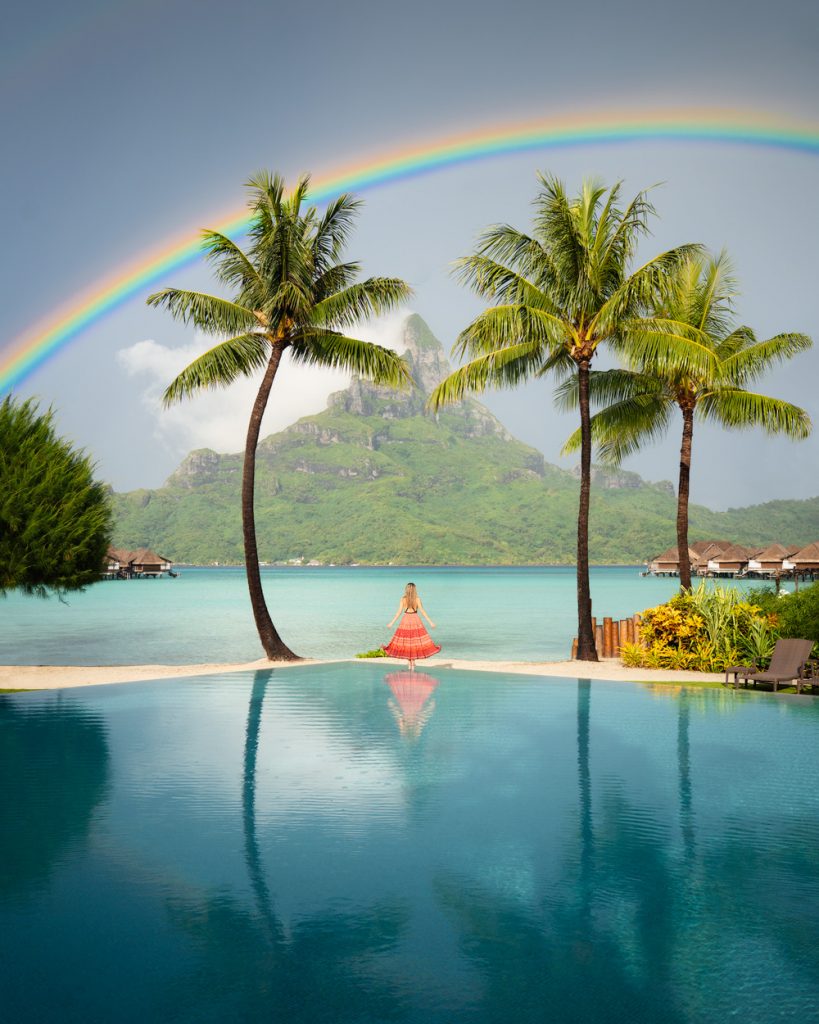
How To Plan a Trip To Tahiti
There are a few things you need to know when planning a trip to Tahiti. Firstly, people often don’t realize that Tahiti is just one of over 100 islands in a region of the South Pacific that make up the country of French Polynesia. Technically, French Polynesia (sometimes also known as “The Islands of Tahiti”) is a collectivity of France, although it does have its own branches of government. You will find that I use the terms Tahiti, Islands of Tahiti, and French Polynesia interchangeably throughout this blog post.
Secondly, the national currency of French Polynesia is the Pacific Franc, also known as CFP Franc or XPF. Although US dollars are accepted in some of the more western establishments, it is important to carry local currency for smaller vendors and tour operators where US currency may not be accepted.
Finally, tipping is not standard practice in French Polynesia like it is in the United States. Yes, you are free to tip if you feel someone has given you exceptional service, but they will not be expecting it.
Now that we have covered the basics, let’s jump into some more specific information about planning your trip to Tahiti!


How To Get To Tahiti
The best way to get to Tahiti from the mainland of the United States is taking a non-stop flight from Los Angeles or San Francisco. From Los Angeles it will take you less than 8 hours to fly there with Air Tahiti Nui. This is the option my husband and myself chose for our most recent trip, and it was a great experience all-round.
We have flown Air Tahiti Nui’s premium economy and business class and these were two of the most comfortable flights I’ve ever taken! I’m sure many of you out there are like me and despise airplane food, but the food with Air Tahiti Nui was actually great, and the customer service was top-notch. Another good thing about flying with Air Tahiti Nui is getting access to a lounge at both LAX and also at Faa’a International Airport in Tahiti.
Alternatively, you can also fly non-stop from San Francisco, which will take a little over 8 hours. These flights are operated by French Bee and United Airlines. Keep in mind that Tahiti can also be accessed via cruise ship, either arriving from international seas or departing from within the country itself.
One thing to note is that many people think you can just fly to Bora Bora and the other French Polynesian islands directly from mainland USA. This is incorrect, as all flights from the United States must first pass through Faa’a International Airport on the island of Tahiti before continuing on to other islands.
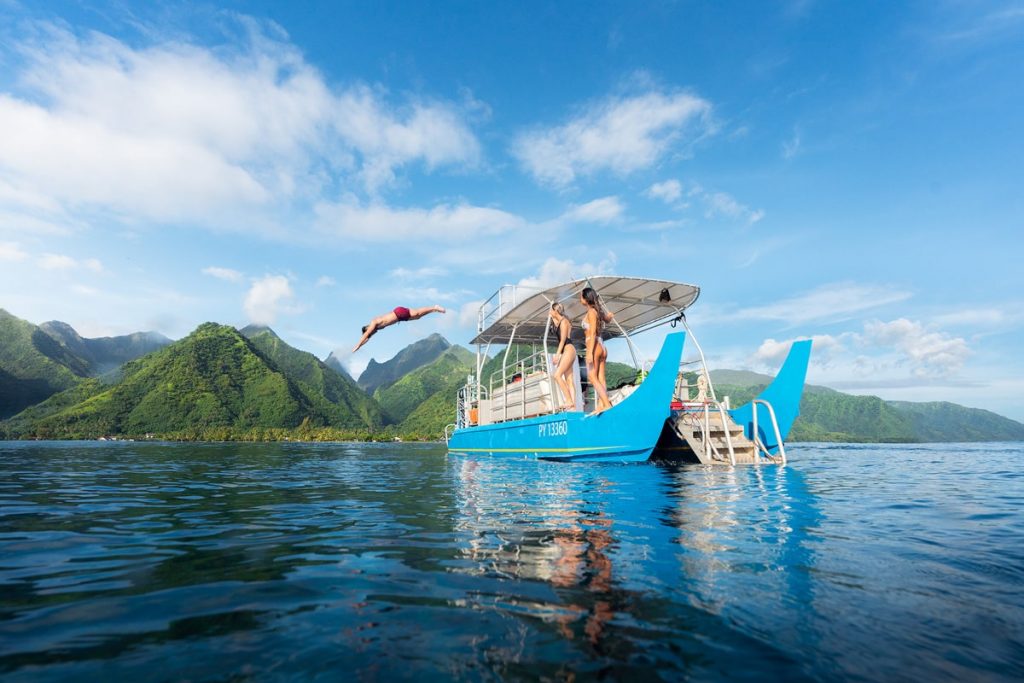
TRAVELING TO TAHITI DURING THE PANDEMIC
As of May 1st 2021, the following entry and stay protocols are in place for travel to the Islands of Tahiti. More information can be found via the Tahiti Tourisme website and this fact sheet. Note that this information is relevant to US travelers, as currently, only people who have been in the US for 30 consecutive days prior to departure can enter Tahiti for tourism purposes.
Vaccinated travelers
- Receive your COVID-19 vaccine dose(s). If you have a two-dose vaccine then you won’t need to wait to travel, though the Johnson and Johnson vaccine requires you to wait two weeks after to travel (at the time of writing, please research this prior to planning your trip).
- Complete an online ETIS form* before departure, including an upload of your vaccination certificate and your itinerary details. Once completed a receipt with an ETIS number will be issued by email. Print this and bring it to the airport.
- Obtain a negative RT-PCR COVID-19 test within three days of your international flight to Tahiti (any RT-PCR test listed on this FDA site is allowed). Print your negative results and bring them to the airport. If the result is not obtained in due time, a certificate of completion of the RT-PCR test must be presented to the airline company, together with a negative result to an antigen test performed on the day of boarding. Any antigen test listed on this FDA site is acceptable for the same-day test in the event the RT-PCR test result was not received. Self-tests are not accepted.
- Upon arrival in Tahiti, you will receive an antigenic test at the airport. On day 4 after your arrival, you will be required to take a self-administered virological test (you can give this to hotel reception). Total costs for both tests will be 5 000XPF for vaccinated travelers (about $50 USD).
travelers With Proven Immunity
- Obtain a Serology Test that proves positive for COVID-19 antibodies between 30-15 days prior to departure.
- Complete an online ETIS form* before departure, including an upload of your serology test, immunity justification (proof of positive PCR test dated between 15 days and 6 months prior to departure date, or a doctor’s note), and your itinerary details. Once completed a receipt with an ETIS number will be issued by email. Print this and bring it to the airport.
- Obtain a negative RT-PCR COVID-19 test within three days of your international flight to Tahiti (any RT-PCR test listed on this FDA site is allowed). Print your negative results and bring them to the airport. If the result is not obtained in due time, a certificate of completion of the RT-PCR test must be presented to the airline company, together with a negative result to an antigen test performed on the day of boarding. Any antigen test listed on this FDA site is acceptable for the same-day test in the event the RT-PCR test result was not received. Self-tests are not accepted.
- Upon arrival in Tahiti, you will receive an antigenic test at the airport. On day 4 after your arrival, you will be required to take a self-administered virological test (you can give this to hotel reception). Total costs for both tests will be 5 000XPF for immunized travelers (about $50 USD).
Other Travelers
- Complete an online ETIS form* before departure, including an upload of your itinerary details. Once completed a receipt with an ETIS number will be issued by email. Print this and bring it to the airport.
- Obtain a negative RT-PCR COVID-19 test within three days of your international flight to Tahiti (any RT-PCR test listed on this FDA site is allowed). Print your negative results and bring them to the airport. If the result is not obtained in due time, a certificate of completion of the RT-PCR test must be presented to the airline company, together with a negative result to an antigen test performed on the day of boarding. Any antigen test listed on this FDA site is acceptable for the same-day test in the event the RT-PCR test result was not received. Self-tests are not accepted.
- Upon arrival in Tahiti, you will receive an antigenic test and will be required to quarantine for 10 days, no matter what your test results are. Travelers under 6 years old will are not subject to quarantine. Children over 6 years of age who are unvaccinated, not immune, or tested positive to COVID-19 are subject to quarantine which will be imposed on the entire family. Testing is at your own expense and will cost 12 000XPF.
*Note that to travel to Tahiti you will need to have travel insurance. If you do not have travel insurance, you will have to tick a box on the ETIS form that says you personally assume all expenses related to cost of care including hospitalization, confinement, or repatriation, should the visitor fall ill during their stay.
usa Testing Requirements
On return to the USA, you will need to show a negative COVID-19 test as per a CDC order on January 26, 2021. The order states that all air passengers arriving to the US from a foreign country are required to get tested no more than 3 days before their flight departs. Documents showing a negative result will need to be shown to airlines before boarding a flight to the USA. Antigenic tests will also be available at Faa’a International Airport each day that there is a flight (3 pm – 7 pm).
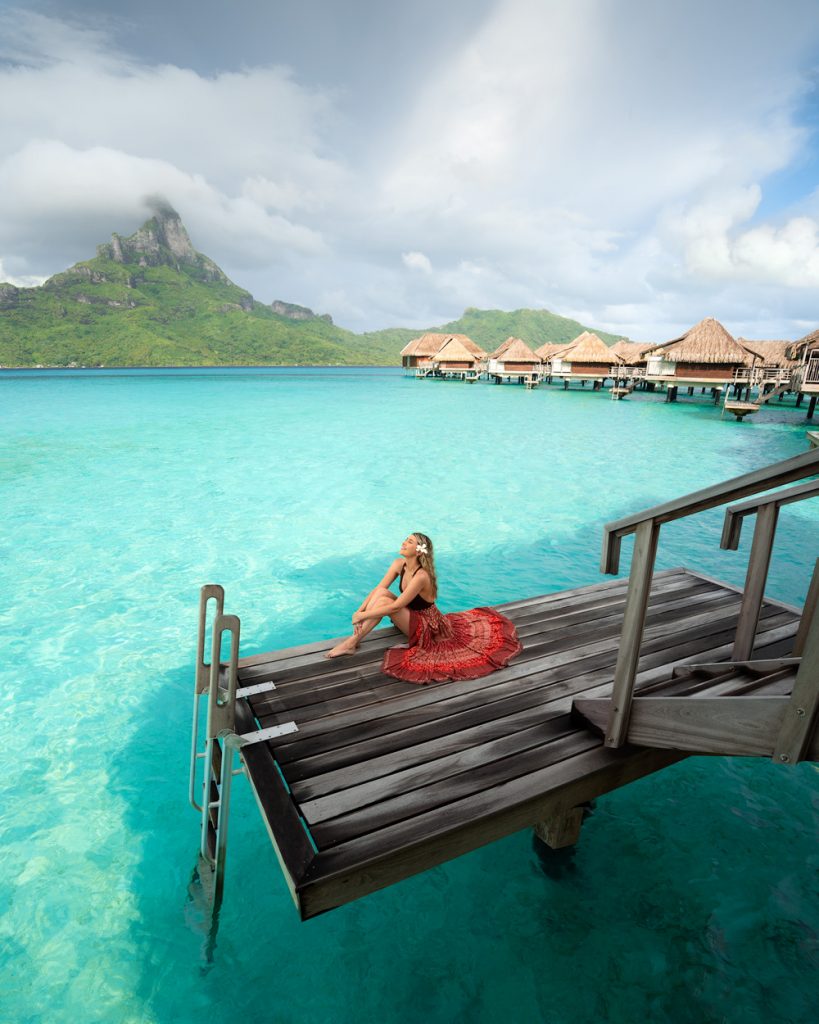
Where To Stay in Tahiti
When deciding where to stay in French Polynesia, most people will think of those beautiful overwater bungalows that are all over your favorite travel influencer’s social media pages. Yes, these places are absolutely magical, but they make up just a small fraction of accommodations across all of the islands!
You will find that each island has its own character. Bora Bora for example is known for its many luxury options such as the overwater bungalows, while more remote islands such as the Marquesas Islands will have more local style guesthouses. There is something for everybody in French Polynesia, and in my opinion, the best way to truly experience it is to stay in a variety of different places.
Tahiti Resorts
Resorts are the most common way for international travelers to experience French Polynesia. French Polynesian resorts usually have everything a visitor would need including restaurants, tour options, a pool, shuttles to/from the airport, etc. In fact, a great place to look for a resort is TripAdvisor as you will be able to see reviews, prices, availability, etc.
Some of my favorite resorts across the Islands of Tahiti are:
- Conrad Bora Bora Nui
- Le Taha’a Island Resort & Spa
- Four Seasons Bora Bora
- InterContinental Bora Bora Resort
- Bora-Bora Pearl Beach Resort & Spa
Tahiti Vacation Rentals
A vacation rental will immerse you more in the local culture and allow you to have a more homestyle experience. These often aren’t decked out with all the extra amenities of a resort (e.g. restaurants, tours), so you will have to head out to find your own food and activities. Typically you will also find vacation rentals on Airbnb or similar sites.
Tahiti Guesthouses
Staying at a Tahitian Guesthouse is a unique experience. Often this entails staying at a local’s home/property that they have set up specifically to host guests. Think of it kind of like an Airbnb, but with a local there to make your stay as enjoyable as possible. At a guesthouse, the host will often cook your meals for you (so good!), show you around their local area, and teach you about Tahitian culture. You can also find guesthouse stays on sites like Airbnb, or via the Tahiti Tourism website here.
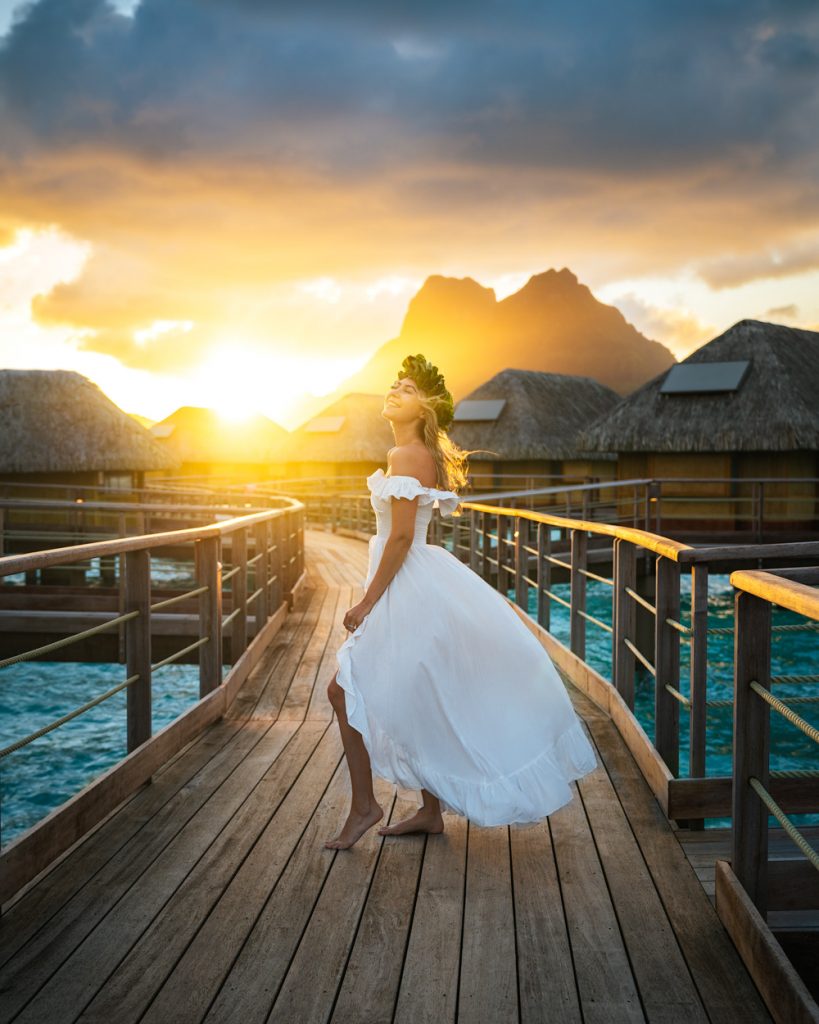
WHEN IS THE BEST TIME OF YEAR TO VISIT TAHITI?
French Polynesia has a tropical climate, with warm temperatures year-round and a short “wet season”. The hottest months are December-March, with an average high of 83° Fahrenheit (28° Celcius). These warmer months also get more rain on average than other months, especially December and January. Excluding the Christmas and New Year period, this is typically a great time to visit for smaller crowds.
The “coldest” months on the Islands of Tahiti are June-August, which average a high of 79° Fahrenheit (26° Celcius). These months are usually the safest bet for optimal weather, as they have the lowest amount of rainy days per month. This also happens to be the high season for tourism, so expect more crowds and higher prices during this time.
The shoulder seasons of April-May and September-November will give you a middle-ground between the warm and cool months. In my opinion, these months are a great time to visit because there will be fewer crowds, a high chance of beautiful weather, and booking accommodation/tours won’t be as challenging as the high months.
With all that said, French Polynesia is an amazing year-round destination. I’ve been twice, once in December and once in May, and we had plenty of sun on both trips. I also didn’t really notice the few degrees difference in temperature. We did have more rain in December for sure, but it never held us back and didn’t affect our activities too much. We even went out for a nice swim in the middle of a rainstorm one day and had a blast!

WHAT TO BRING TO TAHITI
I have an in-depth packing guide for Tahiti that I recommend you checking out. It also includes a free printable packing checklist that will make life a lot easier as you prepare for your trip. Below are some items I would highly recommend you pack:
- Passport
- Swimsuits + rashguard
- Towel/sarong
- Sandals + water shoes
- Reef-safe sunscreen*
- Sun hat + sunglasses
- Lightweight clothing
- Water bottle
- Waterproof bag
- Walking shoes
- Camera equipment
- Travel first aid kit
- Snorkel gear (if your accommodation doesn’t supply)
*Using reef-safe sunscreen is so important when swimming in the waters of French Polynesia. Do not use sunscreens containing oxybenzone and octinoxate as these are proven to cause coral bleaching. You can also choose to leave a positive imprint during your visit by joining the Coral Gardener program where you can actually adopt your own coral and place it back into its environment. You receive a certificate with your adopted coral’s GPS location and your chosen name (also makes for a great gift!)
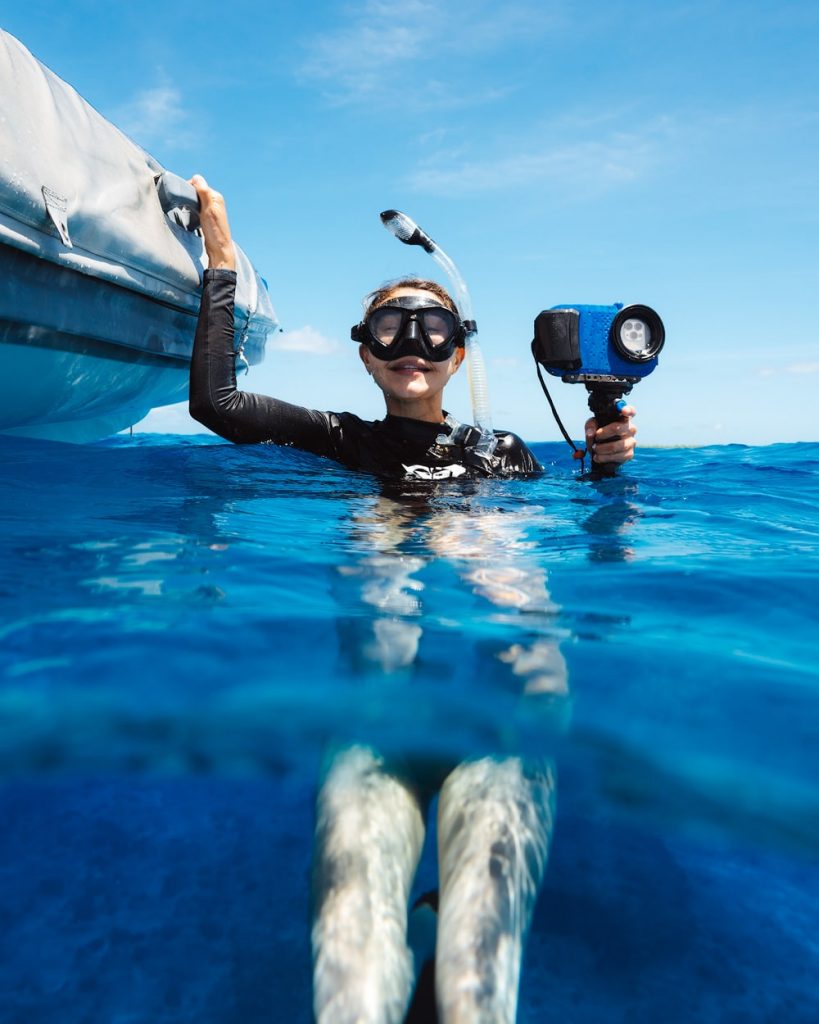
Recommended camera equipment
I’ve had a lot of questions about what camera equipment is required to get beautiful photos in Tahiti, including underwater captures! I know most people these days typically take the majority of photos and videos on their phones. I am personally the same, though I do also take photos on my professional cameras for work. If you are looking to take fun photos and videos for travel memories then I would highly recommend investing in the AxisGo Underwater Phone Housing. I used it non-stop on my most recent Tahiti trip and was so impressed with what it allowed me to capture!
If you’re more of a professional photographer then you may want to consider purchasing an AquaTech Camera Underwater Housing. I have used their housings for years now and love the quality they allow you to capture. Click here for a full list of my camera gear.
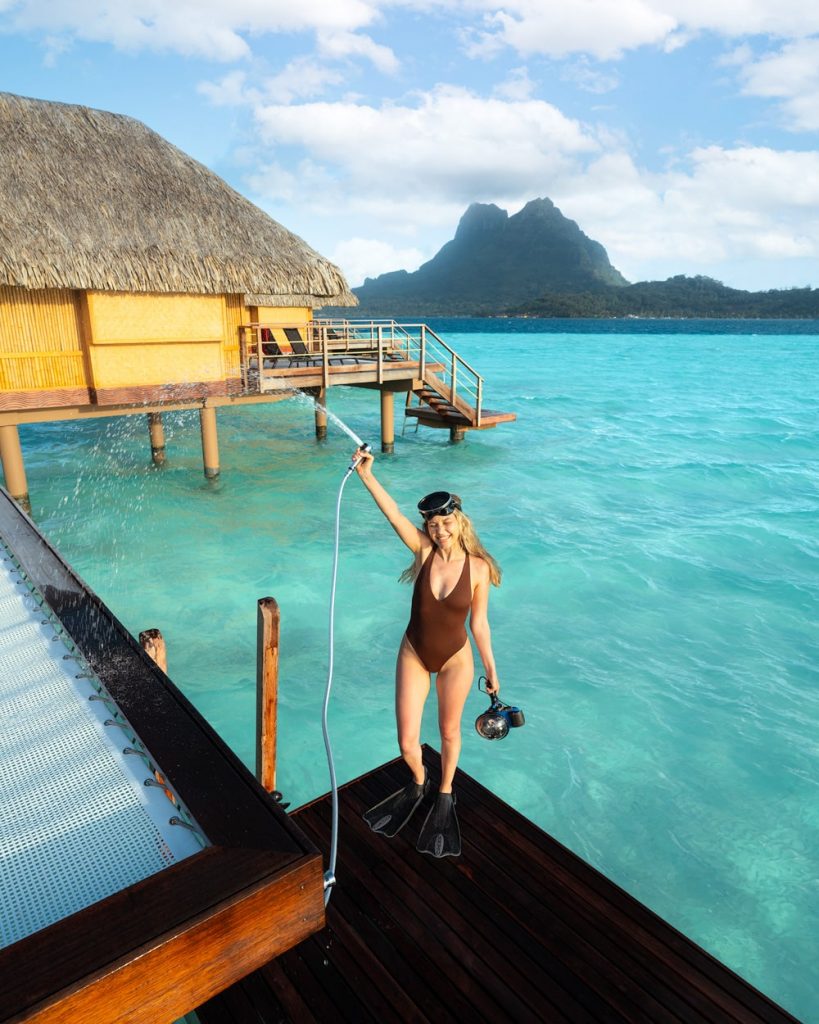
WHAT IS THE CURRENCY IN TAHITI?
As mentioned earlier, the national currency of French Polynesia is the Pacific Franc, also known as CFP Franc or XPF. Although US dollars are accepted in some establishments, it is important to carry local currency for smaller vendors and tour operators where US currency may not be accepted. Most places accept credit cards, but again, having cash is important for small vendors like market stalls.
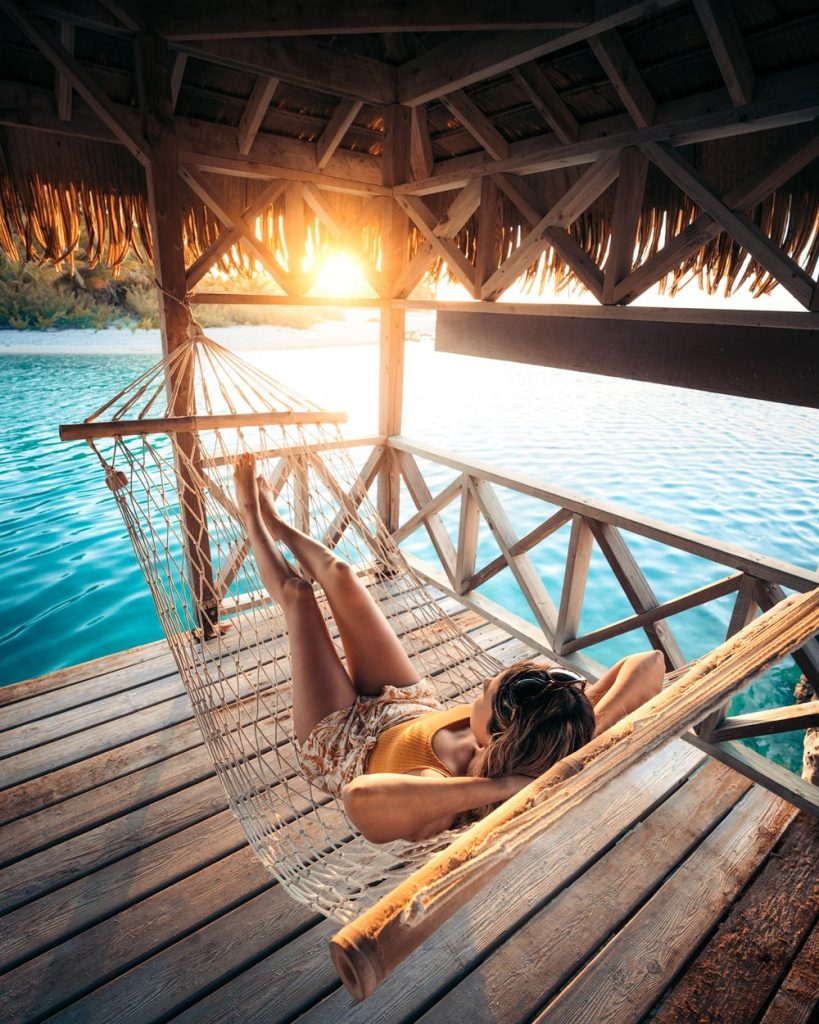
HOW TO VISIT DIFFERENT ISLANDS IN TAHITI
All flights out of the United States will fly into the Faa’a International Airport on the island of Tahiti before continuing on to other islands. From here, you will typically board a smaller domestic plane for your journey onwards. Try to get a window seat for these flights, because the views of the coral reefs and mountains below can be jaw-dropping!
It’s easy to fly to Bora Bora and other Society Islands (the island chain Tahiti is a part of) as there are multiple flights from Tahiti each day. More remote islands such as the Marquesas Islands only have one flight per day. Another popular island, Mo’orea, is right next to Tahiti and is usually accessed via a ferry which runs many times each day not far from Faa’a airport.
Air Tahiti offers domestic flights within French Polynesia to 47 of the islands. Keep in mind that they offer Air Tahiti Passes that allow you to travel to multiple islands in one trip for a packaged price.
Interested in traveling to Mo’orea, Raiatea, or Taha’a? Check out my blog post featuring our trip itinerary.
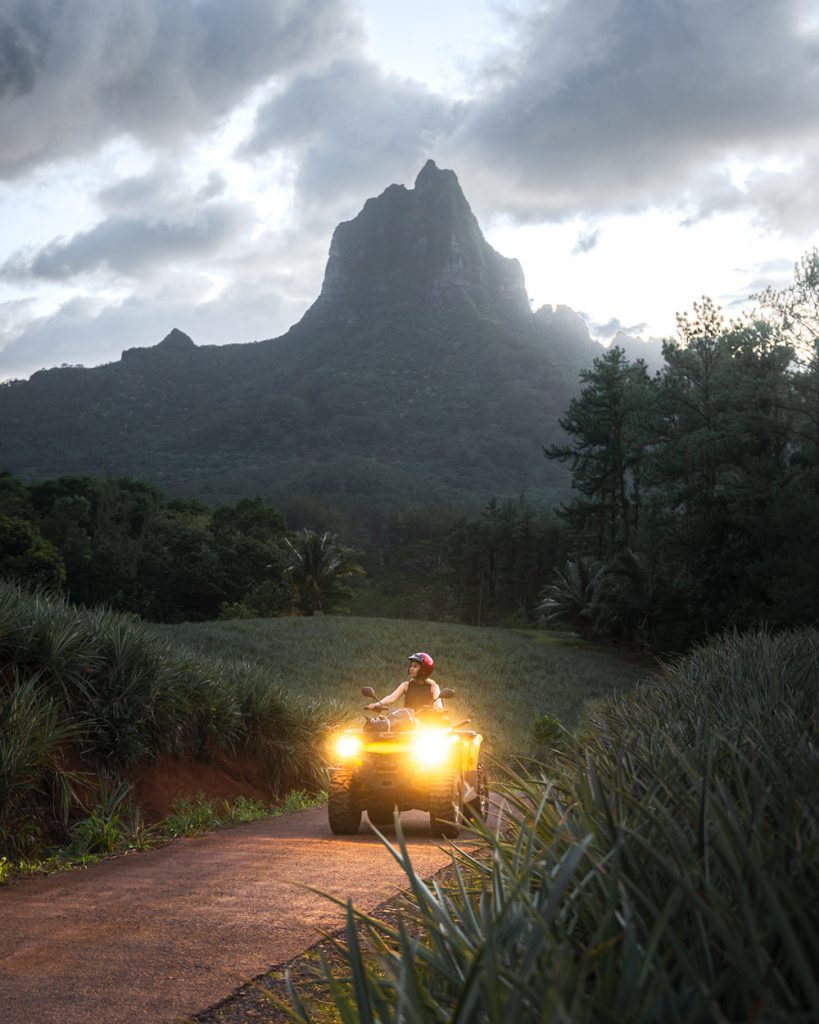
HOW TO PLAN FUN ACTIVITIES IN TAHITI
French Polynesia’s diverse mix of ocean and mountain landscapes provide a wide array of outdoor recreation opportunities. The coral reefs surrounding many of the islands keep the rough ocean waves away from the mainland. This means there are often huge areas of water that have crystal clear and calm water. In contrast, the mountains feature lush forests, waterfalls, and unique views of the islands you won’t see from sea level.
The best way to explore French Polynesia is with a local guide. They know all the best spots. And will often get you to some amazing places you will have never heard of. There are so many different activities to do in French Polynesia. And most resorts will have partnerships with tour operators who will be able to pick you up directly from the resort. Just ask reception about your options and they’ll run you through everything. Tahitian guesthouse hosts will often have similar arrangements with local tour guides as well. Alternatively, if you’d like to do some research and choose your tour operator yourself, TripAdvisor or a Google search will give you plenty of information.
Some of my favorite activities in French Polynesia include:
- Snorkeling
- Jet-skiing
- Local food tours
- Sunset boat cruise
- ATV tours
- Hiking
- Freediving
There are many more activities I personally have not done, but French Polynesia is famous for. These include:
- Surfing
- Fishing
- Scuba diving
- Sky diving
- Sailing
I also recommend attending a Polynesian cultural show during your visit to the Islands of Tahiti. I have attended quite a few of these and each time I am blown away by the beautiful music, dancing, and storytelling.
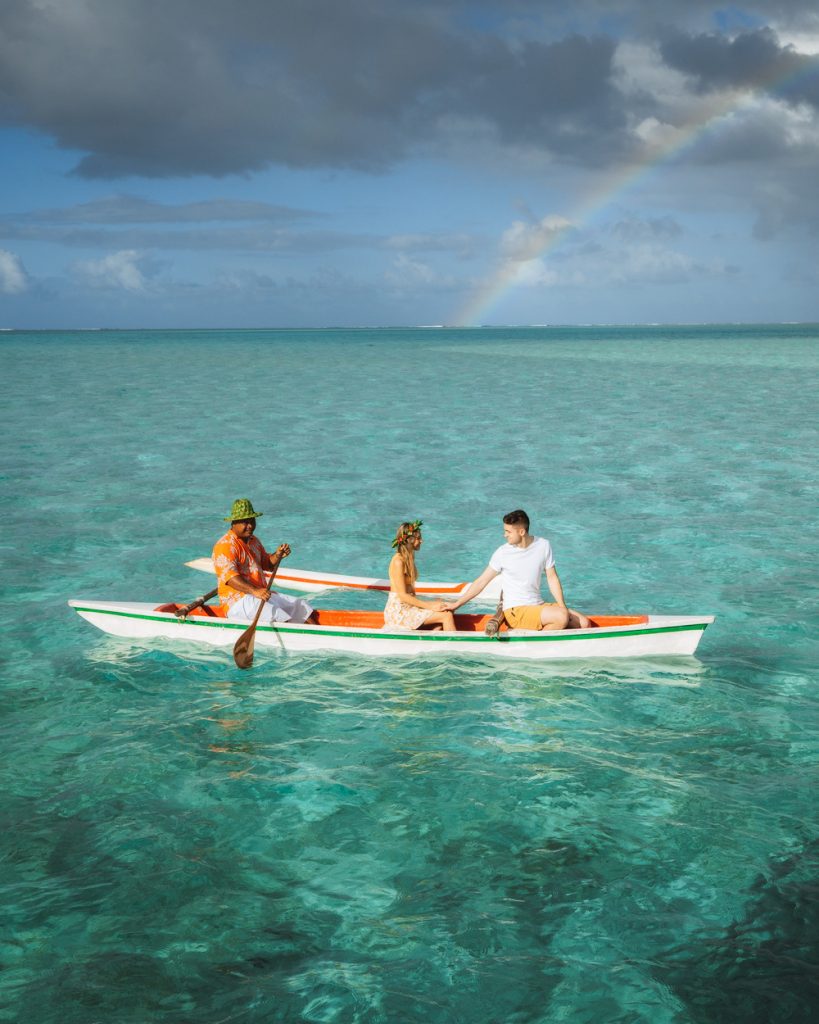
HOW TO PLAN A HONEYMOON IN TAHITI
The Islands of Tahiti are the perfect destination for a honeymoon! There’s just something so romantic about being by the ocean, walking barefoot on the sand, and enjoying beautiful Polynesian culture together. Most people think of Bora Bora when they picture a honeymoon in French Polynesia, and I would say that it’s a great choice. But keep in mind that many of the other islands also make for romantic honeymoon destinations. In my opinion, visiting 2-3 islands in one trip is often the best way to get a feel for the country and try out a range of activities. Honeymooners should check out my guide to the Ultimate Romantic Couples Getaway to Bora Bora.
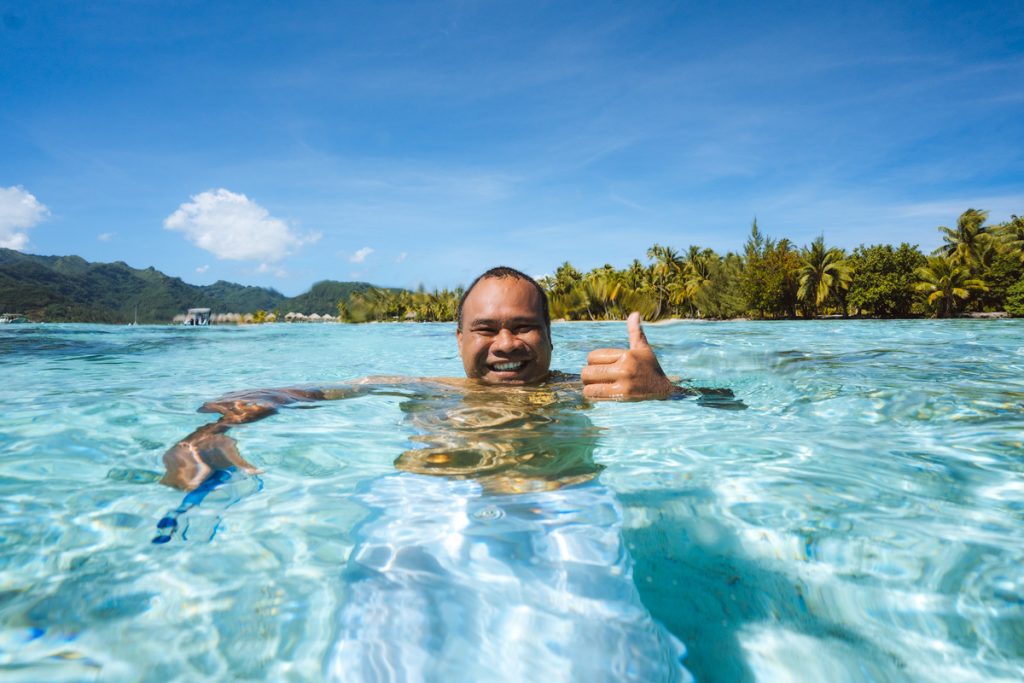
IS TAHITI SAFE?
French Polynesia is one of the safest places you can travel, and the French Polynesian people might be the most friendly I have ever had the pleasure of interacting with. The highest potential for danger in French Polynesia would be with whatever activities you choose to do while there. Obviously, any interaction with the ocean comes with some risk, but as long as you don’t put yourself in situations you aren’t comfortable with, you will be fine. The tour guides are also great at making sure guests have an amazing time without putting them in danger.
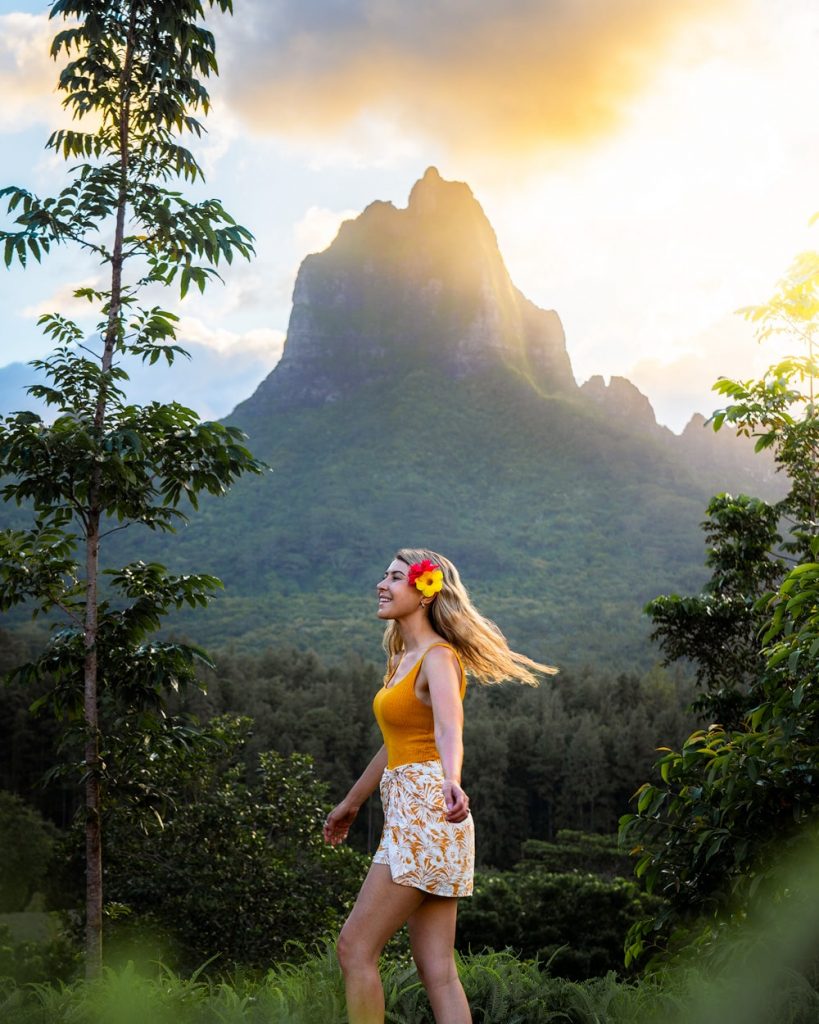
Final Thoughts on traveling to Tahiti
The Islands of Tahiti will always hold a special place in my heart and I hope to visit many more times in the future. Leave a comment below if you have visited and share your favorite memory!
PIN for later planning

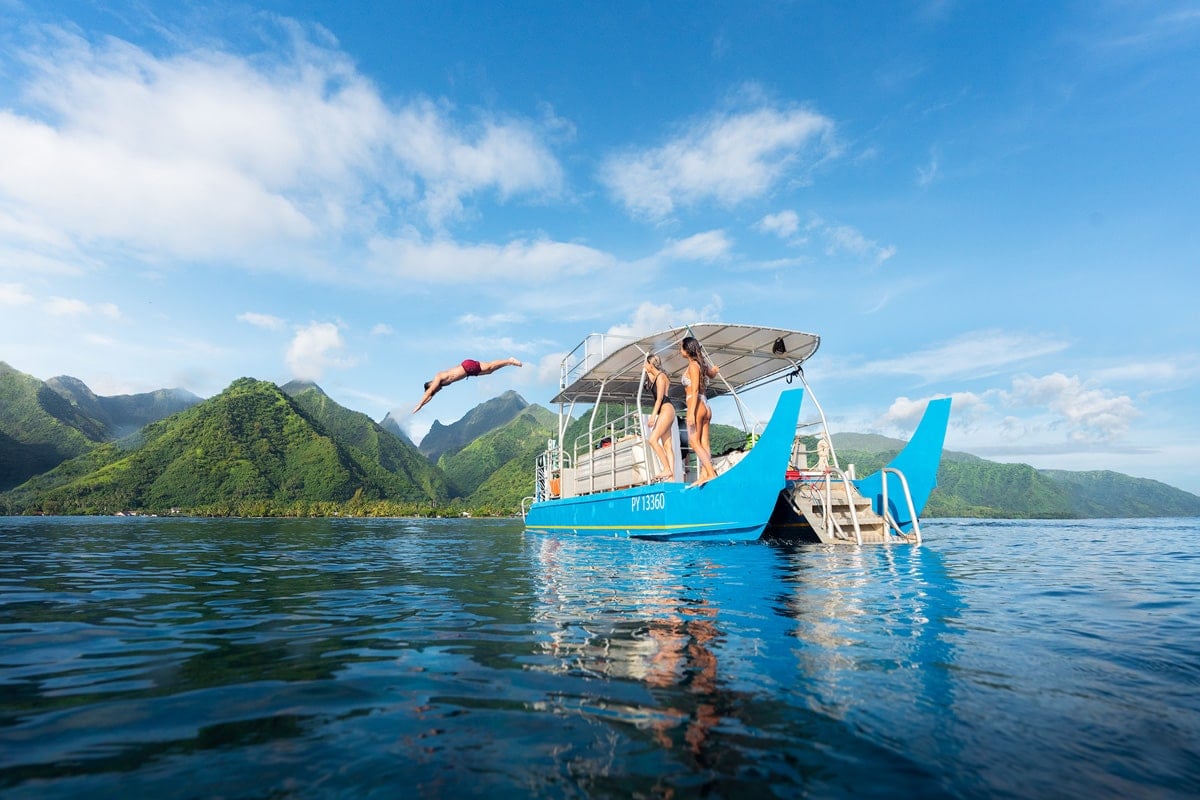
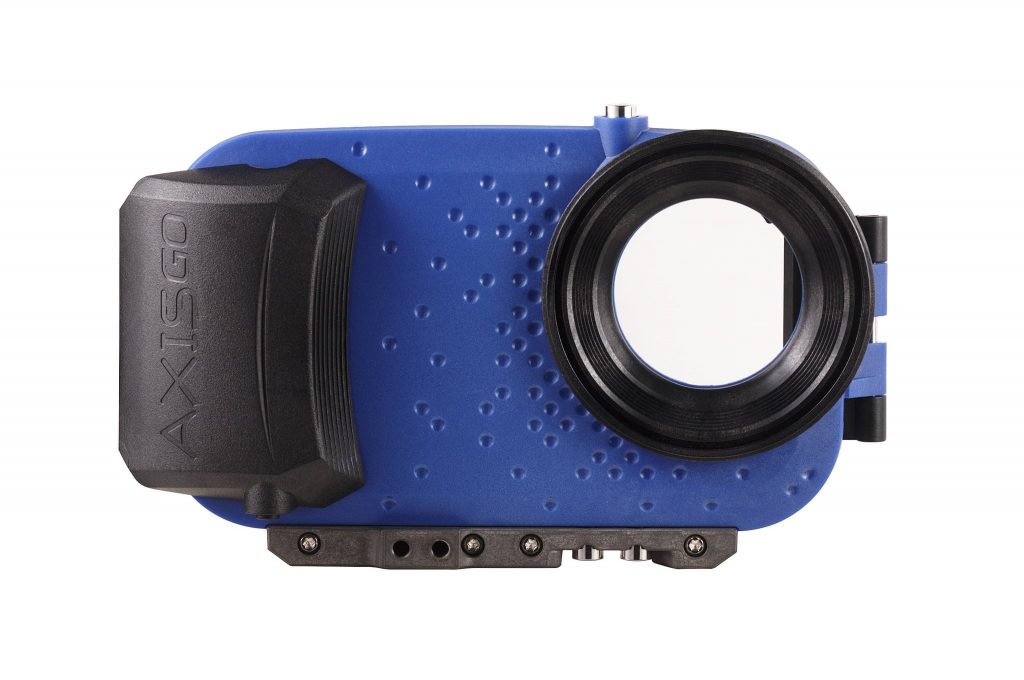
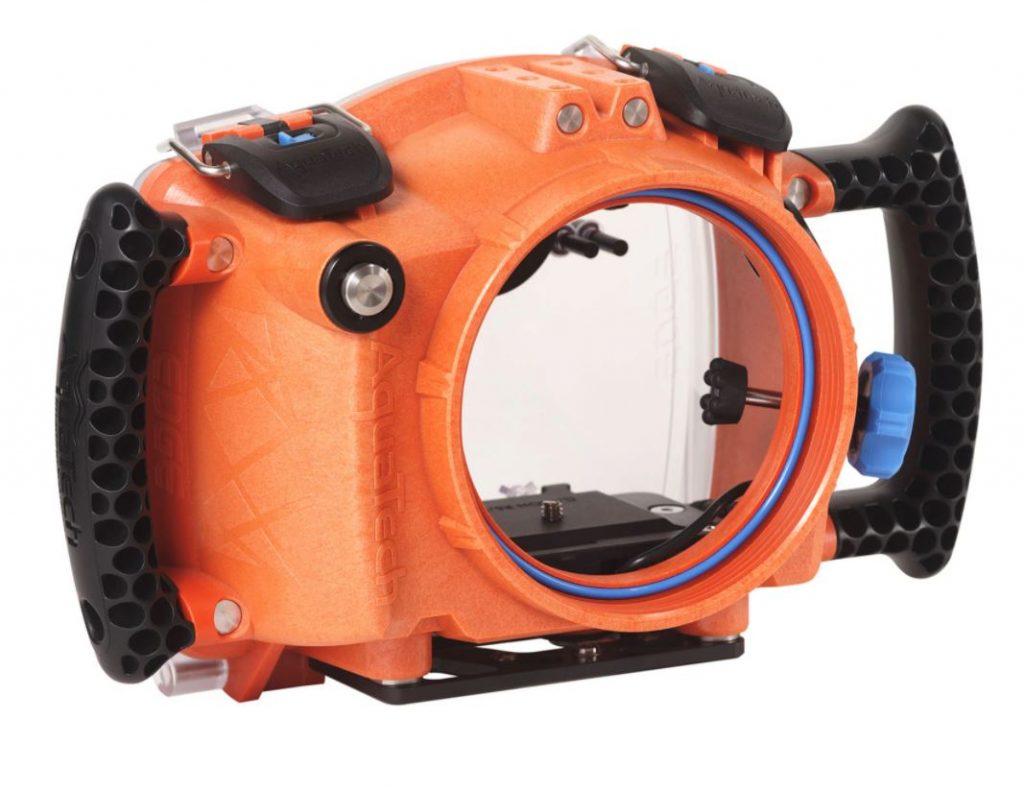
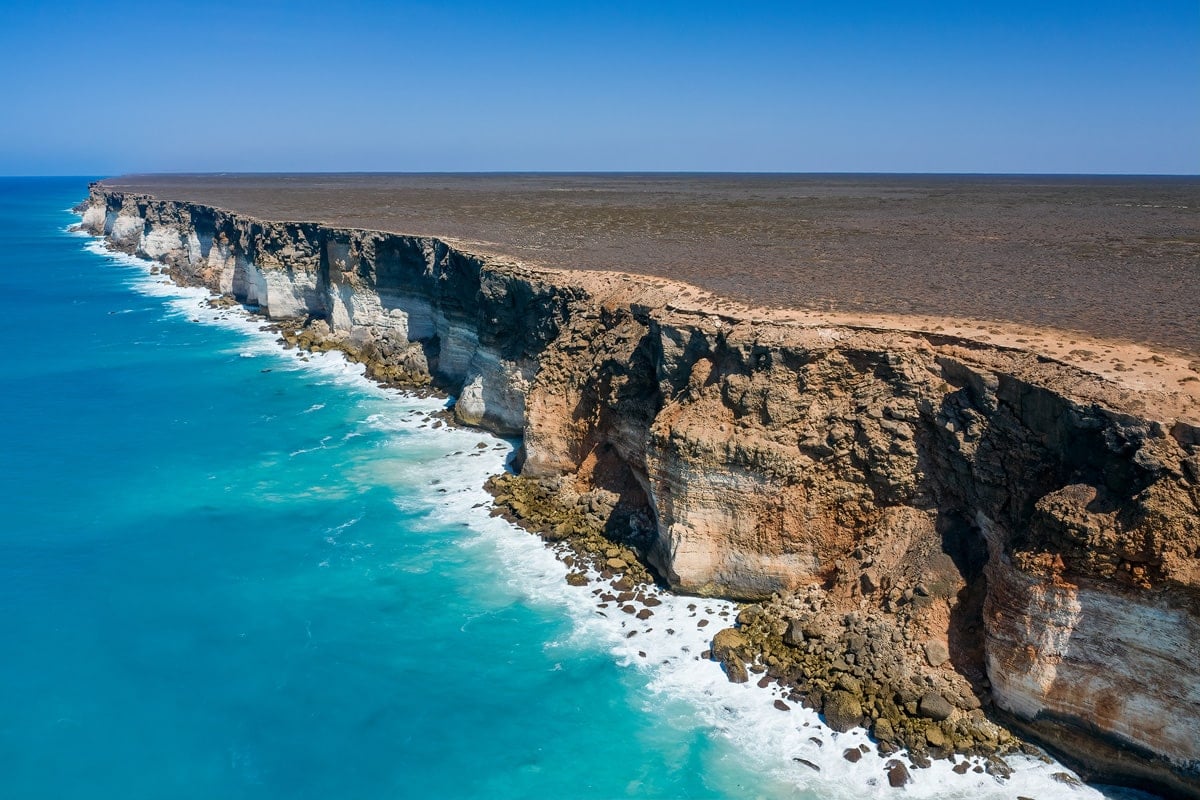

Hi Renee! This guide is stunning!! Would you recommend stopping in Papeete for 3 days on the way back to Seattle from New Zealand? We are trying to decide if that would be enough time to enjoy the best parts of Tahiti, or if we should book a separate trip to Tahiti and visit Bora Bora and other islands! Thanks!
Wow, first of all your article is very complete and interesting. But if I wanted to leave a comment, it’s to say that your photos are just gorgeous. Simply awesome!
This is a great guide! What do you think is the cost to go for a couple? Maybe in the medium to high range?